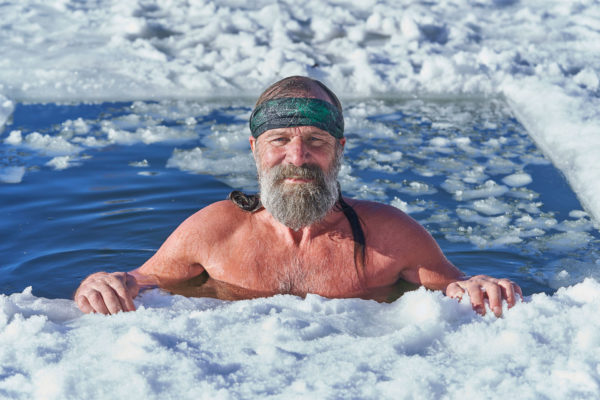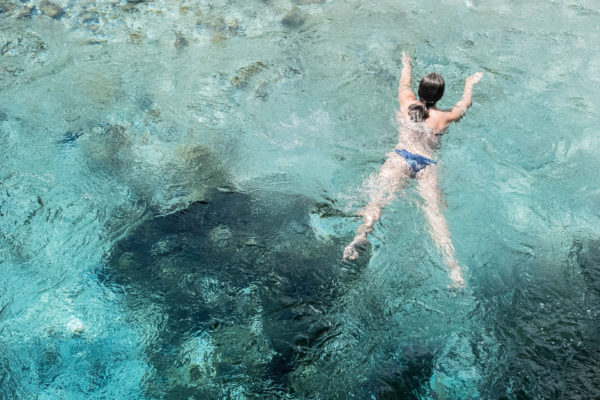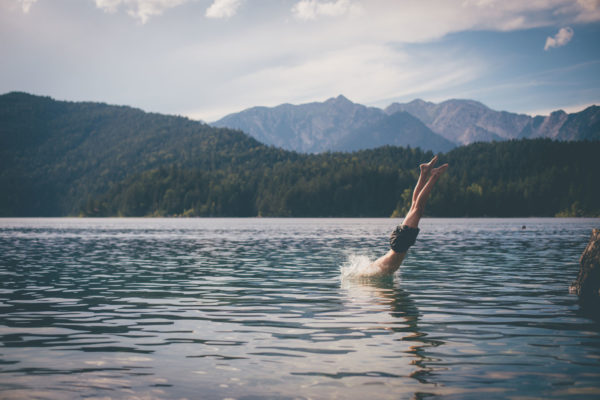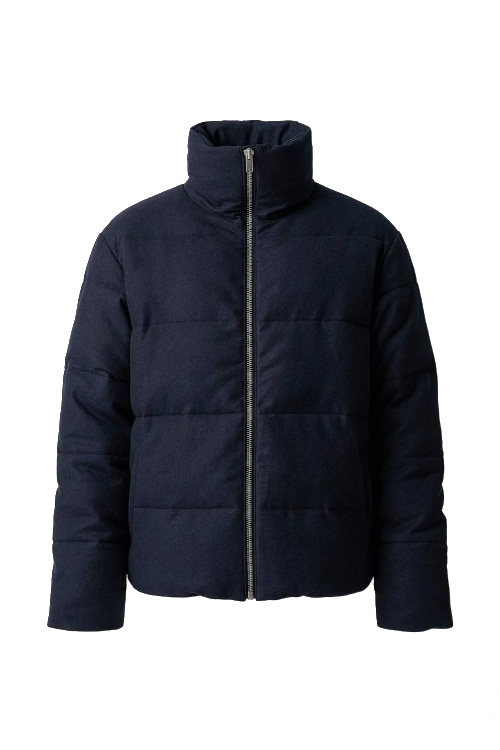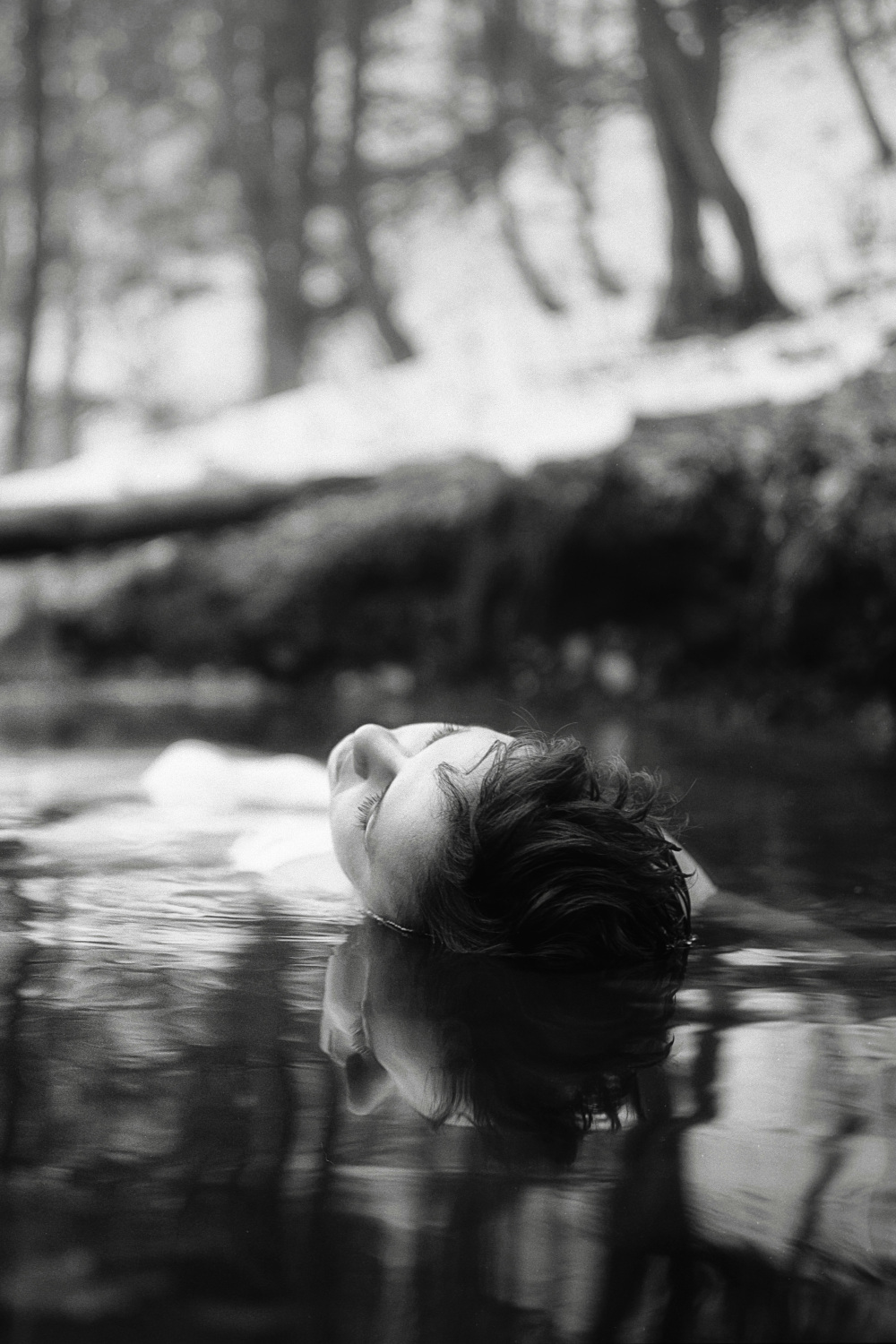
Is Snow Swimming The Next Big Winter Wellness Activity?
By
1 year ago
Take an icy plunge
While most of us spend winter days cosied up at home in front of the fire, others are finding ways to make a splash – literally. Cold water enthusiasts are levelling up their swim sessions with a seasonal take on the activity: snow swimming. But just how beneficial is it for your health? And is it safe? We ask the experts.
What Is Snow Swimming?
Just as its name suggests, snow swimming is an activity that involves swimming in snowy or icy conditions. The practice is primarily aimed at understanding how the body reacts to extreme cold and developing techniques to warm the body using mental and physical strategies.
‘Snow swimming is all about immersing yourself in a lot of light, loose snow, or at least trying to!’ adds Jenny Urwin, cold water swimming expert and founder of Warmcor.
Athletes (in particular marathon swimmers) occasionally take part in snow swimming as a way to enhance their resilience to cold temperatures, but it’s also thought that the activity can have greater health and wellness benefits.
But Jenny tells us it’s not to be confused with cold water swimming – despite the two being very similar. Where cold water swimming involves physical activity in water typically below 15°C, snow swimming brings the water to freezing temperatures (and sometimes even sees swimmers break a section of ice to access a swimming spot in the water).
‘There’s nothing like breaking through a layer of ice and lowering myself into icy water,’ says Jenny. ‘That moment is indescribable. You’re instantly pulled into the present, your mind quieting for the first time that week. You breathe in deeply, hold it for a moment, then exhale and suddenly, you feel alive and renewed in a way nothing else can match. It’s empowering, invigorating, and leaves you feeling like you can conquer the world.’
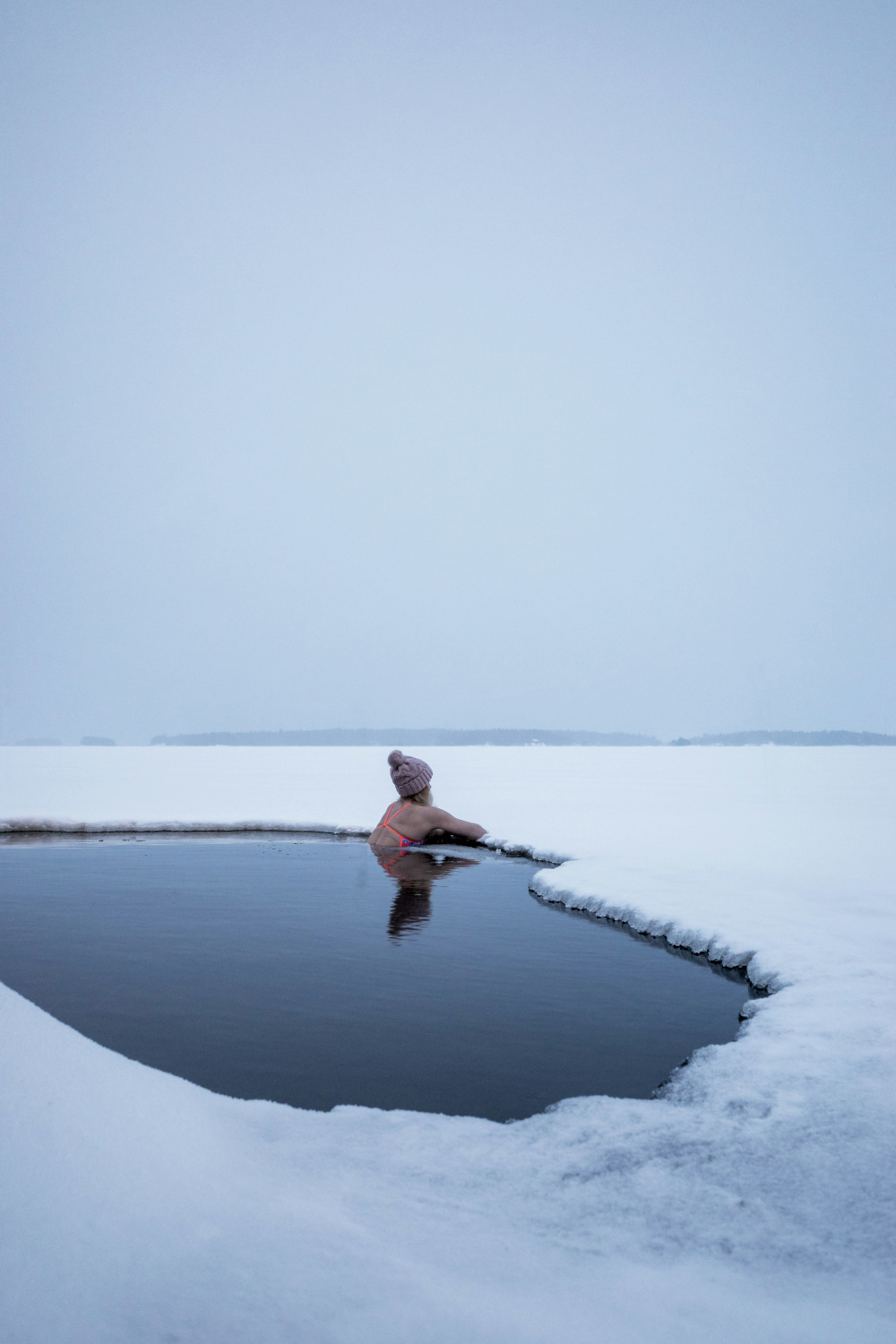
(c) Mika Ruusunen, Unsplash
What Are The Benefits?
As mentioned, it’s believed that exposure to cold water can deliver many health benefits – both physical and mental. ‘Many proponents of cold immersion swimming advocate that it improves various aspects of health, such as improving the immune system or increasing metabolism,’ notes Dr Jeff Foster, a GP specialising in mental health at Manual.co.
‘While research is still emerging, studies have already shown that it can significantly improve mental well-being,’ adds Jenny. ‘The act of immersing yourself in nature, being fully present and letting go of everyday worries is incredibly therapeutic.’
She also stresses the importance of it being a social activity – one which promotes community and, in turn, social wellbeing. ‘Open-water swimming communities, like the Bluetits and Mental Health Swims, are growing rapidly and are some of the most welcoming groups you’ll find. All it takes is a little courage to turn up, and you’ll be surrounded by people ready to cheer you on and show you the ropes.’
Some of the other benefits of snow swimming include:
- Boosted immune system by stimulating white blood cells
- Improved circulation by causing the blood vessels to constrict and dilate
- Reduced muscle soreness, joint pain and inflammation
- Enhanced metabolism caused by activating brown fat, which burns calories to generate heat
- Strengthened cardiovascular health by lowering blood pressure
- Reduced stress and anxiety caused by triggered endorphins
- Improved mood caused by the release of dopamine and serotonin
And The Drawbacks?
While promising plenty of benefits, it’s also worth keeping in mind that swimming in icy conditions can be dangerous – especially if done on your own.
Dr Foster also highlights that this is an activity that should be done in short bursts, to avoid the risk of health complications. ‘The period required to gain any health benefits through an acute stress response to cold is relatively short,’ he says. ‘In fact, it’s no more than a few minutes. The longer one is exposed to extreme cold, the more they could increase the risk of damage to the extremities –specifically fingers and toes – and this can be permanent in some cases.
‘The sudden exposure to a severe cold environment also causes a massive physiological stress on the body, and those with pre-existing heart or other health conditions may be significantly adversely affected, potentially triggering heart attacks.’
Jenny agrees, and recommends checking in with your GP before trying out snow swimming if you have any concerns. ‘There are so many reasons to give cold water swimming a go, but it’s vital to know your limits,’ she highlights. ‘If you have pre-existing conditions, especially anything affecting the heart, always seek medical advice before diving in.’
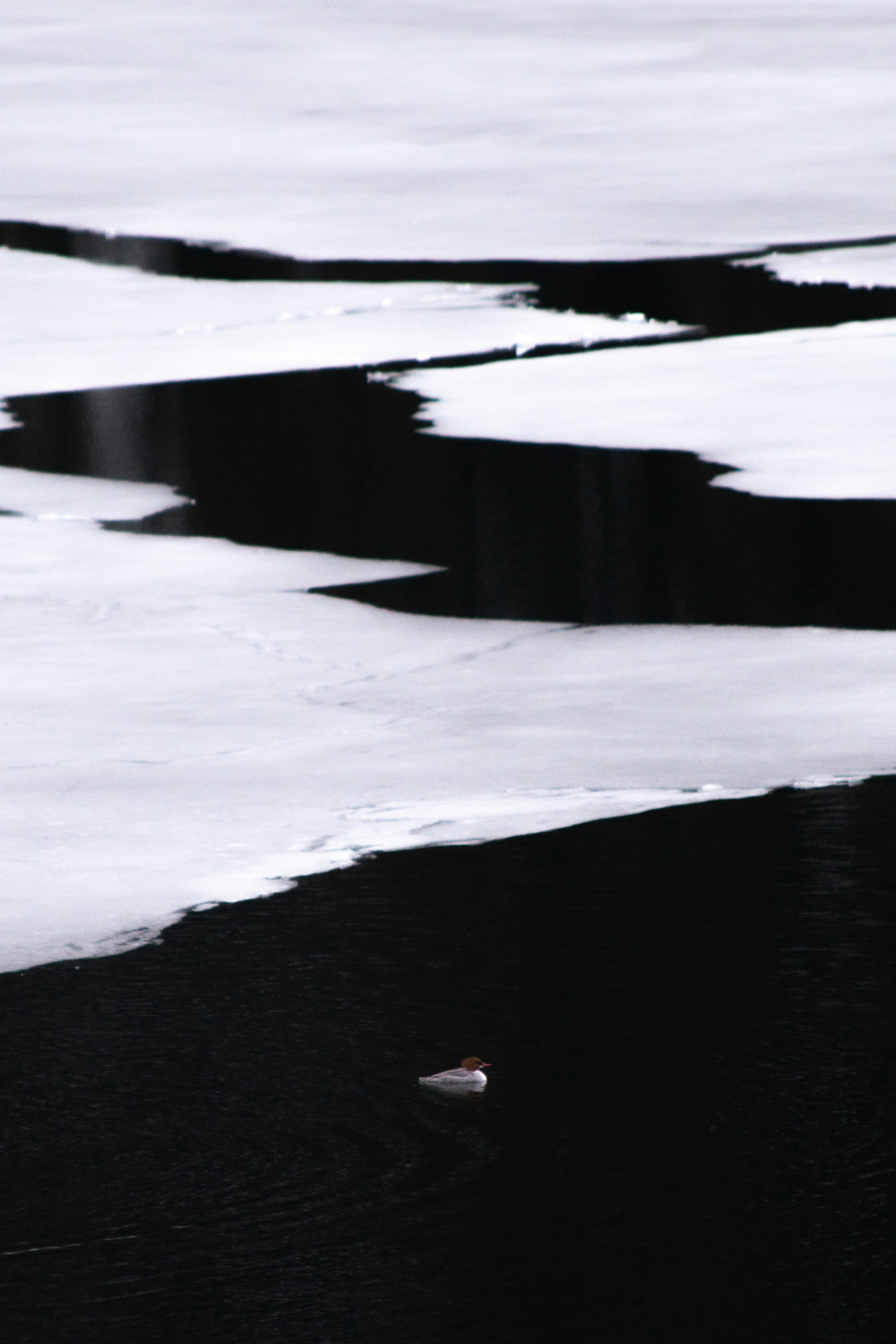
(c) Josiah Gardner, Unsplash
Tips For Beginners
The most important thing is to pace yourself, Jenny tells us. ‘Take your time, and ease into it. Start with cold showers to acclimatise your body and build from there. When you’re ready to venture into open water, start by paddling at the edges and just getting your feet wet and cold. On your next visit, go a little further, and then a bit more the time after that.
‘The key is to listen to your body. Ignoring it is where danger lies, and no one wants their swim to end with a call to 999. Slow and steady wins the race or in this case, the swim!’
How To Undertake Snow Swimming Safely
Be Prepared
The best thing you can do is be prepared. ‘Swimming in any conditions, whether in snow or sunshine, requires respect for the environment and the weather,’ notes Jenny. ‘Hypothermia and after-drop are serious risks, especially in winter, but they can happen in warmer months too. Preparing the right pre- and post-swim routine is essential.
‘Before you swim, check the weather and conditions at your chosen spot,’ she instructs. ‘Is the entry point safe? Has heavy rain affected the water, increasing the risk of pollution? Swimming in contaminated water is something no one wants to experience! Always swim with a buddy and make sure your kit is appropriate, especially for visibility in the water.’
Know Your Limits
Dr Foster also recommends checking in with your health before trying snow swimming. ‘You need to know your tolerance to cold environments, as well as make sure you do not have any pre-existing medical problems such as heart disease, which might put your health at risk,’ he notes. ‘If you wish to partake in this, make sure it is with someone medically trained or as part of a formalised event.’
Listen To Your Body
It’s also important to listen to the cues your body gives you throughout the activity. ‘The initial thrill of cold exposure followed by that calm, euphoric feeling can be addictive, but don’t let it tempt you to stay in too long,’ says Jenny. ‘Cold water swimming is a journey, not a race. Take your time, gradually building your exposure and learning your body’s signals.’
Have A Post-Swim Routine
You’ll also want to make sure you’re ready to warm up as soon you get out of the water. ‘Post-swim, have your clothing laid out in the order you’ll need it,’ suggests Jenny. ‘ Layering is your best friend, and you can make the process smoother with something like our Changing Tube, which will keep you warm while you change out of your swimsuit.’
Featured image: Velizar Ivanov, Unsplash







